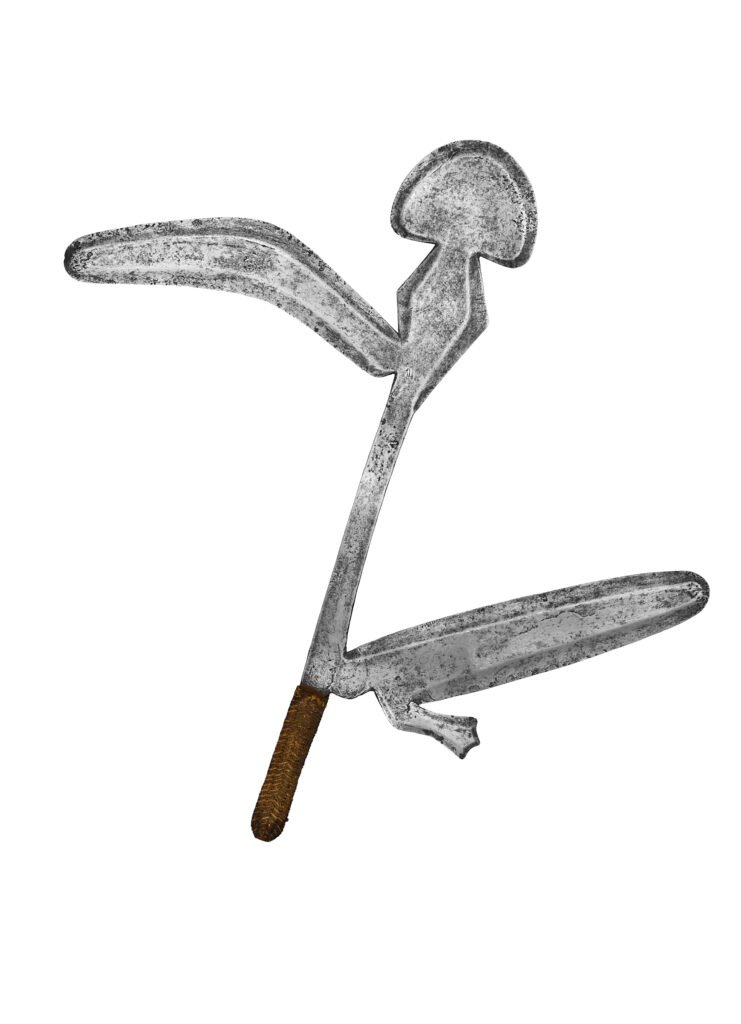Ethnotribalart

My first African object, which I bought more than twenty-five years ago, was a throwing knife. I did not really know
what it was or where it came from. An oddly curved iron
knife with several points…
My curiosity awakened, I began researching to learn
more. I never imagined then that this interest would
grow into a passion for these strange knives with unique
and varied shapes. What interested me first and
foremost was the “art of the forms”: the African
blacksmith’s ability and intelligence in shaping these
iron bars so that their silhouettes combined functionality,
beauty and efficiency, all while producing a formidable
weapon. These blacksmiths knew how to reconcile
tradition and innovation, but also how to draw
inspiration from their neighbors by fulfilling orders for
multiple ethnic groups.
My interest in these offensive weapons expanded to their
defensive counterpart: shields. In basketry, leather, or
wood, they represent an important part of the African
warrior’s arsenal. Like throwing knives, a shield’s design
varies based on its function, and it seems appropriate to
present them together. In the early twentieth century,
the emergence of firearms rendered traditional weapons
obsolete, and the ancestral know-how of forging blades
and making shields was lost. Weapons and shields only
functioned symbolically for ritual and representation:
they became symbols of prestige and initiation objects.
Since the beginning of the colonial era, they were
brought to the West where they filled the collections
of museums and individuals.
The multi-bladed throwing knife is a purely African
invention, often considered the culmination of the
blacksmith’s skill. Other civilizations used throwing
weapons such as axes, but without the sophistication
found in Central Africa. The goal of these monographs
is to create a high quality visual reference for these
knives, which are so often presented in less than
optimal conditions, or in collections of mixed quality
and variety.
Luc LEFEBVRE